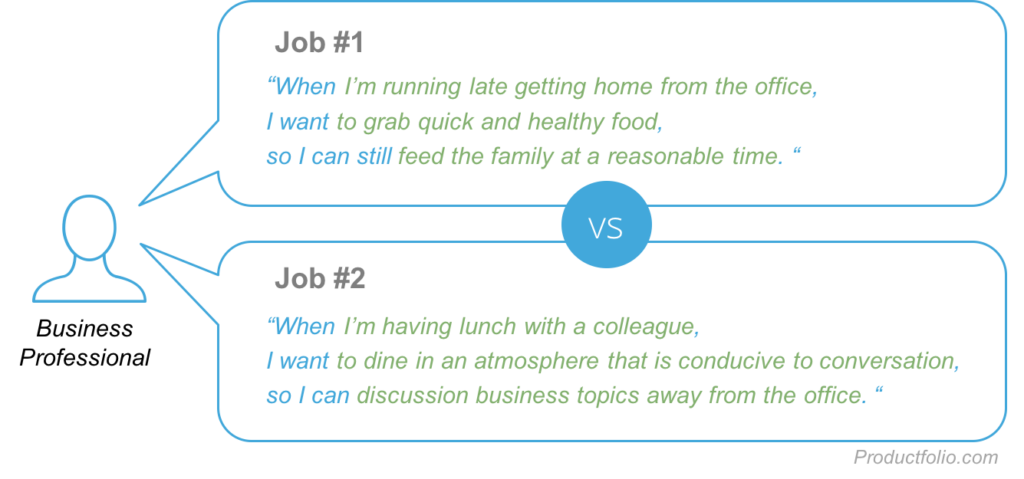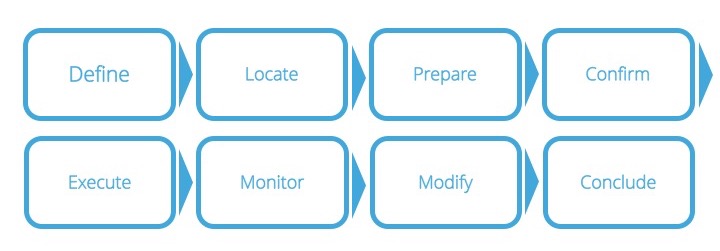What are Jobs to Be Done?
Customers don’t just buy a product, they “hire” a product to do a job. When you think about it from this perspective, you begin to understand the “why” behind the customer’s actions. By understanding “why” you can innovate a better solution, as well as think of a new and better competitive solution to enter the market. Jobs to be done often referred to as JTBD, describes the mechanisms that cause a consumer to adopt an innovation or product.

A lot of processes and frameworks that are incorporated into Product Management can be attributed to one creator. However, JTBD, evolved over a long period of time. The principles emerged from the work of many great researchers and innovators. The beginnings of Jobs to be Done can be traced back at least seventy five years ago to the work of Joseph Schumpeter with his work on “Creative Destruction”. Schumpeter’s work in “Creative Destruction” discusses Customer Jobs and how the only insight you may have that the competition is stealing your customers is a decrease in sales. His influence mostly pertains to economic market dynamics and competition. W. Edwards Deming later added additional influence to what is now JTBD, by prioritizing the customer while referring to Schumpeter’s work. Demming emphasized that a dissatisfied customer will not complain they just leave and go to the competition.
As a final example of the many influencers that helped to create the Jobs to be done method, John B Palmer, Rick Pedi, and Bob Moesta. These three collectively came to the conclusion that customers have “jobs” that they are trying to get “Done.” With this notion together they created the Customers Jobs Principles in the 1990s.

Framework for Jobs to be Done
Tony Ulwick developed a groundbreaking framework that was published in the Harvard Business Review that turns the fundamentals of JTBD into a structure that allows you to define your users’ needs and identify opportunities for growth. The framework has eight specific steps, with each step providing an opportunity to create a benefit, support or service for your customers.
Define – Determine your customers’ goals, and develop a product with a simplified solution to their end goal.
Locate – Make your product easy to use and accessible to your customers. If a competitor’s product is difficult to use or to locate, this is an opportunity for you to improve upon the competition.
Prepare – Build and develop your product with ease of use in mind. Based on your research you should be able to anticipate your customers’ needs and develop your product with functions that will alleviate struggles.
Confirm – Verify that your users have a current need for the product that you’ve developed. You can do this with market testing, or if a competitor already has this product and you are developing and releasing a similar product that improves upon your competitors.
Execute – Release your product to the market based on the timing in which your customers need is to be fulfilled. Customers’ needs can be seasonal, make sure to release the product at the right time.
Monitor – Monitor the progress of the products used to determine if any alterations need to be made.
Modify – Make modifications to your product that are determined necessary without adding additional effort from the customer. Make it as seamless as possible. Auto-updates are a good example.
Conclude – Complete the job. Prepare to repeat the job.
The above framework should be broken down by asking the question of what the customers’ needs are, and how your product can solve those needs. Since customers “hire” products to get jobs done, the goal is to alleviate your customers’ current struggles with your new product allowing them to “get the job done” with your product with ease. Alternatively, your product may provide a solution that enhances your users’ ability to complete a task better, faster, smarter, or stronger as examples.
Categorize the Jobs to be Done
Fulfilling a customer’s need with a functional solution only solves a portion of their struggle. The majority of JTBD also have social and emotional components. Both context and circumstance are important when categorizing the jobs to be done.
Two Type of Jobs to be Done
- Main JTBD – The main problem your customer wants to be solved by a product or service
- Related JTBD – a secondary or adjacent problem your customer would like solved by your product or service in conjunction with the main problem being solved.
Subsets to the Two Types of Jobs to be Done
- Functional – practical and objective users requirements
- Emotional – the feelings the user has associated with the JTBD
Subsets to the Emotional aspects of the Jobs to be Done
- Personal Dimension – The customer’s feelings associated with the product
- Social Dimension – How the customer perceives others feel about their use of the product
When determining functional, emotional and social satisfaction with your new product, it’s a good idea to take a quick look at the Kano model. One of the main takeaways from the Kano model is that a bonus attribute that creates excitement in a customer today will become an expectation in the future. It’s important to monitor the product overtime after a release so that you know when there is a shift from excitement to expectation so that you can modify your product.
Jobs to be Done Outcome Expectations
It’s a good idea to measure the satisfaction that your customers experience so that you can make adjustments. There are four types of outcome expectations.
- Desired outcomes that customers want to achieve
- Undesired outcomes that customers want to avoid
- Desired outcomes providers want to achieve
- Undesired outcomes providers want to avoid
Most of the time this research is done by gathering data with surveys, talking to customers, and KPI’s. After gathering all of the data you can determine how satisfied customers are with your product and if any modifications are necessary.
The Jobs to be Done model is all based on providing solutions to your customers’ problems that they didn’t know they needed. When you see customers crafting together solutions for themselves, it’s a clue that there’s potentially a place in that area of the market for innovation.